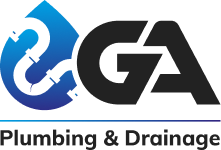A sump pump is your home’s first line of defence against basement flooding, water damage, and costly repairs. But even the best sump pump can fail to protect you if it’s installed incorrectly. Many homeowners and even some inexperienced contractors make simple mistakes during the installation process that can shorten the pump’s lifespan or leave you at risk of flooding.
Here are the 7 common mistakes to avoid, along with expert tips to ensure your sump pump installation is done correctly.
1. Choosing the Wrong Size Pump
- Mistake: Selecting a pump that is either too small to handle the water volume or too large, resulting in unnecessary wear.
- Why It’s a Problem: An undersized pump may not keep up during heavy rain, while an oversized pump cycles too often.
-
Pro Tip:
- Check your home’s GPH (gallons per hour) needs based on basement size, rainfall, and water table height.
- Consult with an expert to match the pump size to your specific conditions.
2. Skipping the Check Valve
- Mistake: Not installing a check valve between the pump and discharge pipe.
- Why It’s a Problem: Water can flow back into the pit after the pump shuts off, making it work harder.
-
Pro Tip:
- Always install a check valve to prevent backflow.
- Position it in a way that’s easy to access for maintenance.
3. Poor Pit Placement
- Mistake: Putting the sump pit in the wrong location in your basement.
- Why It’s a Problem: Inefficient water collection, leaving parts of the basement unprotected.
-
Pro Tip:
- Place the pit at the lowest point where water naturally gathers.
- Avoid placing it near walls without checking for proper drainage slope.
4. Not Sealing the Lid
- Mistake: Leaving the sump pit lid loose or open.
- Why It’s a Problem: Allows debris, odours, and pests to enter the system.
-
Pro Tip:
- Install a sealed sump pump lid with gaskets.
- This keeps moisture under control and prevents damage to the pump.
5. Incorrect Discharge Pipe Setup
- Mistake: Discharge pipe is too short or angled toward the house.
- Why It’s a Problem: Water may pool near the foundation, causing more flooding risk.
-
Pro Tip:
- Direct discharge 10–20 feet away from your home.
- In cold climates, use an anti-freeze device to avoid pipe blockages.
6. Forgetting a Backup Power Source
- Mistake: Relying solely on main power for the pump.
- Why It’s a Problem: Sump pumps fail during power outages, often when you need them most.
-
Pro Tip:
- Invest in a battery backup sump pump or water-powered backup system.
- Test it regularly to ensure it works in emergencies.
7. DIY Without Experience
- Mistake: Attempting sump pump installation without proper plumbing knowledge.
- Why It’s a Problem: Poor installation can cause pump failure, leaks, and water damage.
-
Pro Tip:
- Hire a licensed plumber who specialises in sump pump and drainage systems.
- Get it done right the first time to avoid costly repairs later.
Why Choose GA Plumbing and Drainage Services?
When it comes to protecting your home from water damage, GA Plumbing and Drainage Services is the trusted choice. Their experienced team ensures:
- Correct sump pump sizing and placement.
- Proper check valve installation.
- Fully sealed and efficient drainage systems.
- Backup solutions to keep your pump working during power cuts.
With GA Plumbing and Drainage Services, you get professional installation, reliable results, and long-term peace of mind.
Final Tip: Avoiding these seven mistakes can save you thousands in repairs and extend your pump’s lifespan. A sump pump is not just a piece of equipmen,t it’s your home’s flood insurance. Get it installed the right way, and it will protect your home for years to come.
Sump Pump Installation: Do’s & Don’ts
Do’s
- Choose the right size pump for your home’s needs.
- Install a check valve to prevent water backflow.
- Place the sump pit at the lowest point in your basement.
- Seal the sump pump lid to keep out debris and pests.
- Route discharge water far away from your home’s foundation.
- Invest in a reliable backup power system.
- Hire a qualified professional for installation.
Don’ts
- Don’t guess the pump size without calculating water flow.
- Don’t skip essential components like the check valve.
- Don’t place the pit where water doesn’t naturally collect.
- Don’t leave the lid open or unsealed.
- Don’t direct water toward your home’s foundation.
- Don’t wait until after flooding to install a sump pump.
- Don’t attempt complex installation without proper skills.






